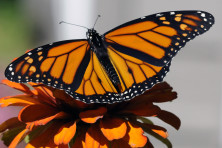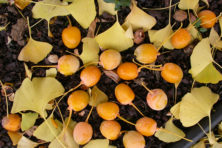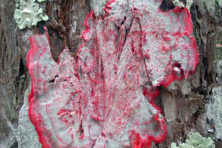Roy & Charlotte Lukes: Plants and Feeders for Birds
- Share
- Tweet
- Pin
- Share

Just after Christmas every year I get some phone calls or meet someone who says, “I received a bird feeder as a gift and would like to know where I should put it.” I’m sure the answer I’ve given to some of them made them want to hit me over the head with their new gift.
I could very well tell them that if you can’t provide the birds with exactly what they require – primarily food, water and cover – you might just as well put the feeder back in the box! Naturally this is not the answer they had been expecting.
Food and water, in the majority of instances, will not attract birds if the natural cover is not sufficient. Without the proper cover, natural protection from their enemies and the elements, your yard could just as well be the Sahara Desert as far as the birds and other animals are concerned.
Having driven many back country roads in the county we see examples of very open landscapes surrounding people’s homes with a bird feeder filled with seeds, but not a bird in sight. At other places we were immediately attracted to the movement of birds where the feeders had been set within short distances of excellent cover, consisting of both evergreen and deciduous shrubs and trees.
Human habitat can also be wildlife habitat. Yours can be a wildlife neighborhood and now is the time to start the planning. The most logical, and surely the best place for you to put good conservation practices to use, is right in your own backyard. Bear in mind that you will not accomplish this in one year. Plan your plantings to create a “forest edge” community for the wildlife. Order some seed and plant catalogs. Call your area plant nurseries to learn what they have to offer. If you own several acres, take a hike on your own property to locate small trees and shrubs that can be transplanted near your home next spring.
I like to think of the ideal balance of forest edge planting. This would include large trees such as pines, cedars, oaks and maples as a backdrop. Clusters of white spruces would be good to include on a large piece of property as year-round cover and especially as nesting sites for birds. The 500 young bare root seedling white spruces we planted on our land in 1978 have grown into a thick windbreak and they serve as good protection for wildlife.
Next would come small trees such as crabapple, hawthorn, cherry, serviceberry and red cedar. Word has it that deer will not eat western red cedar. Plants that deer favor may be an important point to consider in your selections. Tall shrubs can be mixed in with the small trees. Consider the several varieties of dogwoods, elderberry and sumac. Native honeysuckles can be very good, but beware of a few invasives such as the Tartarian honeysuckle. It spreads easily by way of bird droppings and becomes a severe pest in terms of competing with native plants.
Low shrubs might include blackberry, blueberry, huckleberry and other wildlife food plants. Herbaceous growth near the front of your forest edge can consist of sunflowers, asters, purple coneflowers, daisies, marigolds and black-eyed Susans. If you want hummingbirds to visit your yard daily in summer, plant flowers like columbine, hollyhock, coral bells, salvia, dianthus, delphinium, red petunias, nicotiana and fox glove.

This is Roy’s double-decker platform feeder, popular with many bird species. The removable cage is set on top for winter and a board is placed on top to reduce snow cover. Photo by Roy Lukes.
Some of you may want to consider constructing different types of bird feeders. If there is one primary flaw in many feeders it is that they are much too small. However, several small feeders scattered around a yard can also be quite effective. In addition, consider building an oversized open table or platform feeder if you want spectacular results. Get some pine or white cedar boards four feet long and three pieces of two-by-fours, two feet long. Make, in a sense, a box four feet long and two feet wide with the two-by-fours placed on edge and nailed between the center and the two ends of the “box.”
In other words you will have a top (out in the open) and a bottom level with two covered compartments side by side. Nail a half-inch strip around all sides of the top so that the seeds won’t blow off so easily. Leave a few small gaps on each of the sides for water drainage. You might also want to carefully nail sections of quarter-inch dowling on top of the half-inch strips, pre-drilling and using small brads. This enables the birds to perch there more easily, especially if they are trying to hold a sunflower seed between their toes as they hammer the seeds open.

The recent heavy snow was kept off the platform by using the cage and board. Photo by Charlotte Lukes.
One sturdy cedar, or four-by-four treated pine, post dug and firmly tamped into the ground will easily support the “double-decker” platform feeder, fastened with angled metal braces. I recommend having it at least five feet above the ground and far enough away from trees so squirrels can’t jump on to it. Thin sheets of metal, such as sturdy aluminum stove pipe, can be nailed around the post to prevent squirrels and raccoons from climbing to the top. I have also secured a cone-shaped metal baffle directly below the platform. Slope the feeder ever so slightly so that rain runs to one side and can flow through the gaps on the edges of the top.
Many of you have an inner burning desire to somehow be associated with the exciting activities of birds. Improve their living conditions by providing them with food, water, cover and areas where they can reproduce and safely rear their young, and they will not let you down. Your private backyard sanctuary will become the stage, the wild animals (large and small), the performers, and you, lucky you, the audience!




